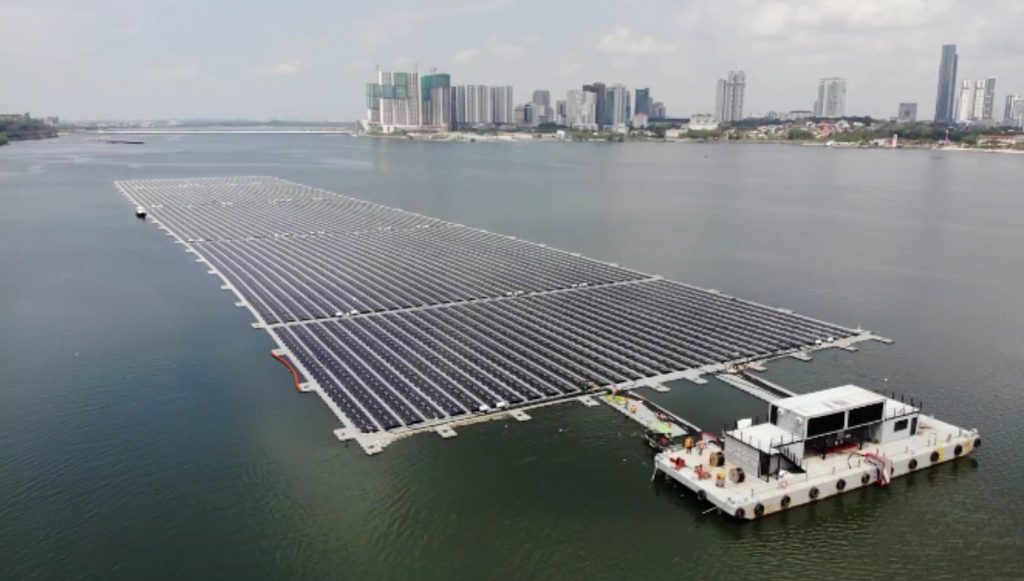Singapore now home to one of the world’s largest floating solar farms
Singapore has completed the installation of one of the world’s largest floating solar farms on sea water in the Straits of Johor.
With the successful building of the 5-MW-peak offshore floating photovoltaic (OFPV) system, it is part of Singapore’s plan as a land-scarce country to tap offshore solar as part of its renewables strategy.

Photo courtesy of Sunseap
The floating solar farm at Woodlands took close to a year to set up amid movement restrictions during the COVID-19 lockdown. It involved a total of 13,312 panels, 40 inverters and more than 30,000 floats. The installation is expected to produce an estimated 6,022,500 kilo-watt hours (kWh) of energy per year, potentially offsetting an estimated 4,258 tons of carbon dioxide, bringing Singapore closer to decarbonisation.
The solar farm is equipped with electrical panels, control system and a 22kV transformer. It is also a landing point for the subsea cable that transmits the generated power to the national grid. The floating PV system is designed with a robust constant tension mooring system that is able to withstand changing weather conditions, keeping the platform and all of the operational equipment on board steady. There is also an air-conditioned second deck that doubles-up as a visitor centre and viewing gallery.
The Woodlands project was more challenging compared to other land-based or rooftop installations due to:
- The unpredictable nature of open sea,
- The need to avoid shipping routes and
- The presence of barnacles.
Marine expertise was also required for mooring installation and system design.
Furthermore, the pandemic lockdown last year posed an additional challenge as foreign workers were unable to leave their dormitories.
Frank Phuan, co-founder and chief executive officer of Sunseap Group, Singapore’s leading solar energy provider, said, “This is an important milestone for Sunseap as we believe that offshore space like the sea, reservoirs, lakes… offers exciting opportunities for land-scarce and densely populated cities to tap solar energy. They are places that are unobscured from the sun and with low risks of vandalism or theft.”
READ MORE SINGAPORE ENERGY PLANS
Singapore Green Building Masterplan: 80-80-80 in 2030
Singapore seeks to foster a leading Green built environment sector, which can lower its carbon footprint and provide a healthy, liveable and sustainable environment for all.
Singapore Budget 2021
Deputy Prime Minister Heng Swee Keat announced that Budget 2021 will shift “from containment to restructuring” as Singapore’s economy continues to reopen. With the theme Emerging Stronger Together, it combines measures to help families, workers and businesses weather the COVID-19 crisis in the immediate term, with measures to accelerate structural adaptations for the long term.

Singapore’s fourth desalination plant, which can treat both sea and reservoir water, officially opens
Water security in Singapore has been boosted with the opening of the country’s fourth desalination plant. The Keppel Marina East Desalination Plant is the only one in the Republic capable of treating both sea and reservoir water, and is part of efforts to ensure that taps never go dry, rain or shine.
